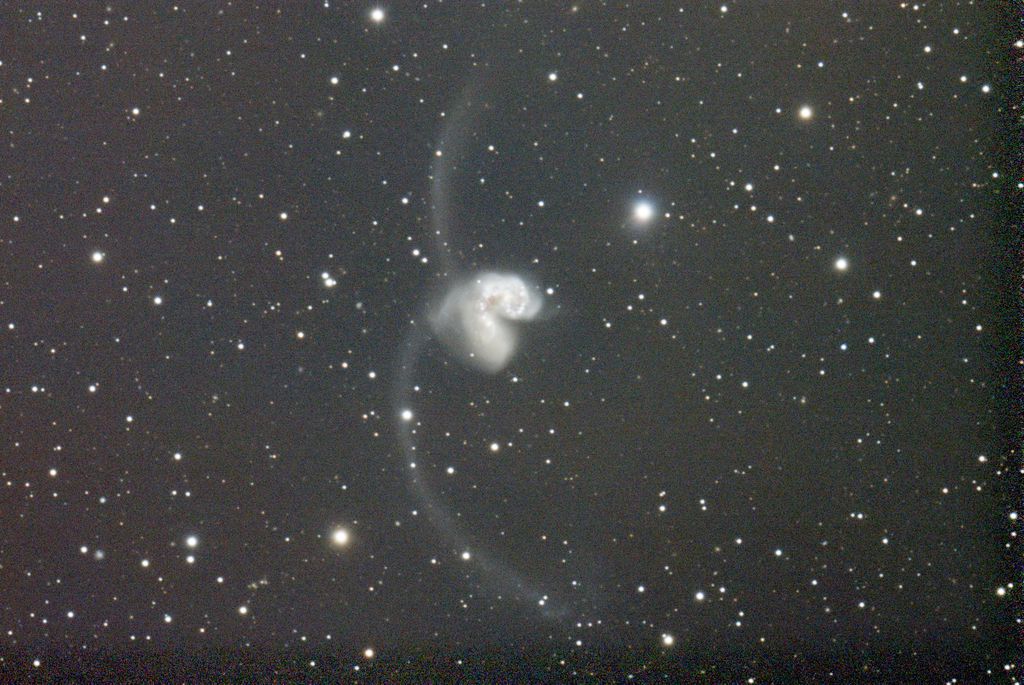https://drive.google.com/drive/folders/1bureqWYgYBgs4ZxbLgGTRf9yTXD2pc1Y?usp=drive_link

Thank you!
Gina
...
·
 |
|---|
Hello- I am imaging at F10 with Celestron 9.25" Edge HD, ASI2600 MCP and EQ6 R Pro mount with Celestron OAG from Bortle 4-5 skies. I use ASIAir Plus, a camera gain of 100 and BIN 3 normally with this set up. Previously I had no issues with the above, but lately after running WBPP (lights, darks, flats and flat darks) the resulting stacked images look horrible - like extremely noisy and overexposed. In this case below I only shot 60 sec subs at 0 degrees C and -10 C in 2 separate groups. No filters were used. I am wondering what I am now doing wrong? The individual light frames look fine. Have any of you experienced similar results? Could it be an issue with my ASI2600 MCP going bad or some setting inadvertently getting changed with the calibration frames, or something not set up properly in WBPP? Here is what I see after spectrophotometric color calibration before any other processing. Here is also a link to the masters in case any of you kind souls has time to take a look. I should note that the same issue is present when I complete WPBB on each group separately. https://drive.google.com/drive/folders/1bureqWYgYBgs4ZxbLgGTRf9yTXD2pc1Y?usp=drive_link  Thank you! Gina |
...
·

·
1
like
|
|---|
The first port of call in this or similar issues is NOT to use WBPP and do it manually, step by step. Since you didn't include raw frames I couldn't check whether is anything wrong with them but as far as the calibration frames are concern I can't find any obvious fault, other than looking weird because of the bin 3x. Post a stack of raws I can have a go at them. As for the final product the way it looks points to something is wrong with the normalization step but what exactly it is I can't say.
|
...
·
 |
|---|
Gina, I may be totally off base on this…. but I also imaged NGC 4038/4039 last week and from my location on Northern California it was very low on the horizon. Because of the low angle I had bad chromatic aberration (I have a refractor) and also a high FWHM measurement on my stars with big halos. I ended up taking 3-4 hours of images over 6 nights and letting PI weight them with WBPP. Even so it was a challenging target to process. Might it be that you are also experiencing ‘smearing’ due to the low angle (I think you’re in Arizona?)
|
...
·

·
1
like
|
|---|
Got it! The OP didn't use the 24bit LUT. When that is on everything is back to normal.
|
...
·
 |
|---|
andrea tasselli: Thank you so very much. I think this is most of the issue. I must have inadvertently turned that 24 bit button off in PI. |
...
·

·
1
like
|
|---|
Jonny Bravo: Hello - thank you so much for taking a look. The total light frames were 270 @ 60 sec so 4.5 hours only integration time. I suspect that most of the issue was how things were being displayed in Screen Transfer Function without that 24 bit button mentioned below being enabled. |
...
·
 |
|---|
Gina, I may be totally off base on this…. but I also imaged NGC 4038/4039 last week and from my location on Northern California it was very low on the horizon. Because of the low angle I had bad chromatic aberration (I have a refractor) and also a high FWHM measurement on my stars with big halos. I ended up taking 3-4 hours of images over 6 nights and letting PI weight them with WBPP. Even so it was a challenging target to process. Might it be that you are also experiencing ‘smearing’ due to the low angle (I think you’re in Arizona?) Hi Neil - yes you are right - this object is quite low on the horizon - but it is to the south which is the darkest area of my night sky (Bortle 4). I could only get about 1 hour per night and a lot of satellite trails - so that is definitely another reason for this particular outcome. However other master lights for various galaxies have been looking similar the past 1-2 months so I think the main factor is the 24 bit button not being enabled for Screen Transfer Function in PI as mentioned in Andrea's comment below! |
...
·
 |
|---|
It sounds like there may be an issue with either your backfocus spacing or camera tilt. The ASI2600 with a Celestron 9.25" Edge HD can be sensitive to precise alignment. Double-check your spacing (should be around 146.05mm total from the reducer) and inspect for any sensor tilt or collimation drift. Thank you. Will do! |
...
·
 |
|---|
Don't need to, the field is well corrected. I checked it.
|